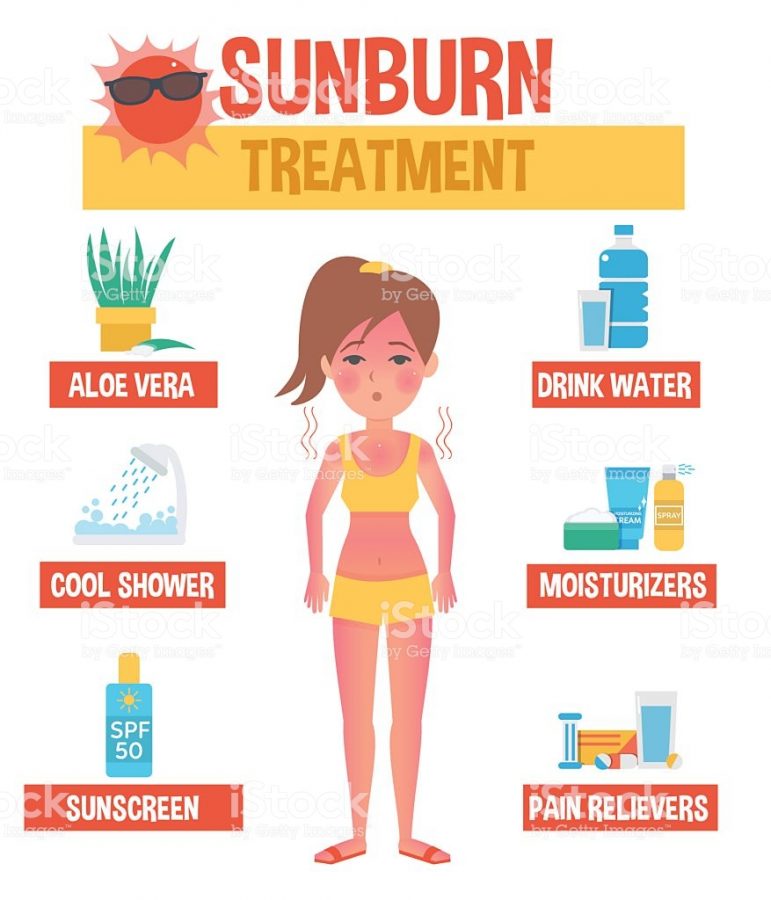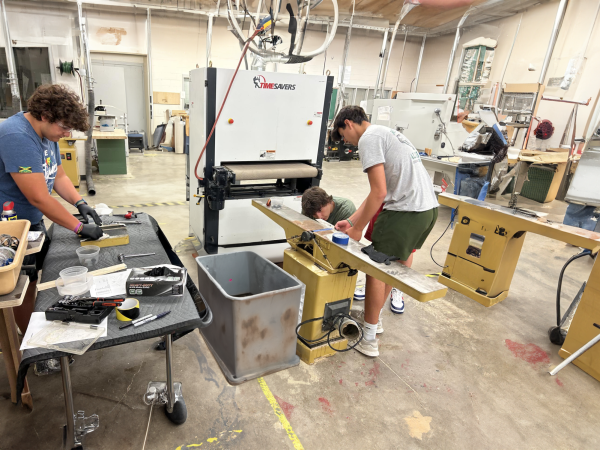The science of sunburns
As summer rounds the corner, so are sunburns
April 26, 2019
Summer is a time for kids and adults. Barbecues and water parks allow for all ages to enjoy time in the raging, warm sunlight.
Time in the sun brings about certain dangers for those that don’t take the right precautions, sunburns have devastated normal sleeping positions and comfortable outfits ever since the beginning of history.
Most of us think sunburns are a pain just on the surface of cherry-red skin, but multiple things go on behind the scene the person affected may not see or even feel.
The sun is basically a big nuclear reactor, giving off radiation as heat and energy for the planets stuck in orbit. With the heat and energy, three main ultraviolet wavelengths come with. UVA (Ultraviolet A), UVB (Ultraviolet B) and UVC (Ultraviolet C) are the ones to make it to the Earth’s atmosphere.
UVC is the most dense out of the three, which, in turn, does not fully get through Earth’s atmosphere. UVA and UVB on the other hand, don’t just penetrate your skin, it can even pass through your pool towel.
Ultraviolet light (UV) is the most harming form of non-visible light to human skin. It is a type of electromagnetic radiation; allowing for the skin to tan and turn the pigment brown, but an overdose of UV emits a warm and bright red spot on the skin.
Too much tanning in salons or in your backyard without proper skin care will result in a sunburn, or different forms of blisters and in extreme cases, even skin cancer.
The science of tanning was actually only discovered recently, scientists could not uncover how the body’s functions worked in the presence of UV radiation. As time moved on, they finally cracked the bodily function.
According to Elena Oancea, an assistant professor of biology at Brown University states, “As soon as you step out into the sun, your skin knows that it is exposed to ultraviolet radiation, it’s a very fast process.”
The skin automatically knows that you’re being hit with beams of harmful rays and due to an evolutionary trait inherited from our ancestors, Melanin is brought into the equation.
Melanin is the group of natural pigments found in most living organisms responsible for skin tone and hair color. It is the natural process that the body undergoes as rays hit our skin. In an oversimplified example, melanin is a big blanket that covers the skin cells. Through a normal tanning session, the melanin will just coat the cells, turning the skin a golden brown. With too much exposure to the sun’s radiation, the skin starts to burn and blister at the surface, critically injuring cells on the inside.
This can all be avoided if certain precautions are taken. Obviously sunscreen is the number one cure to a nasty sunburn, SPF 15 with re-applies every 25-30 minutes. Covering with baggy clothes will help the most, but is the most far fetched as the weather normally gets upwards to 85-90 in June. A wide-brimmed hat will help with the face, neck and ears as UV absorbing shades are on the market.
So as summer rounds the corner, all are encouraged to take precautions towards their skin and continue to bask in the sun’s rays and hopefully get the golden brown tan that is always sought after.

















